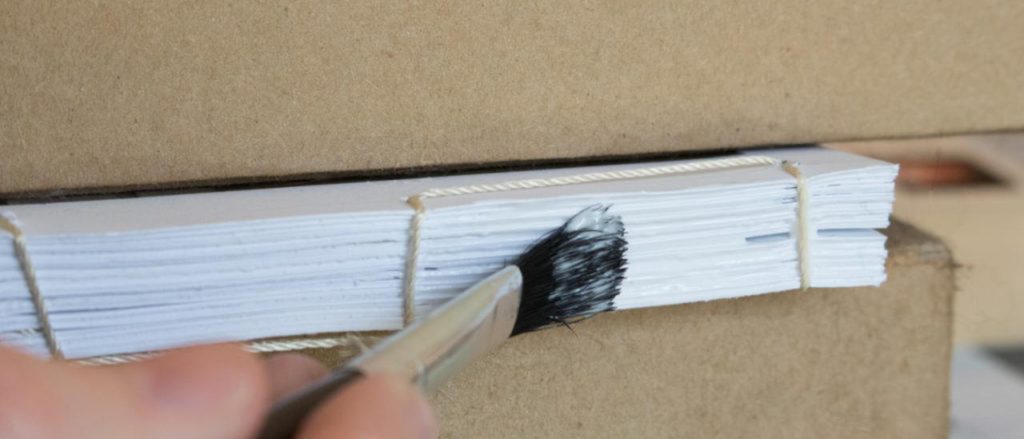Bookbinding styles range from simple to more complex. Options for self-binding include taping the book, binding it with string or ribbon, gluing it, or even sewing the pages into a book. If you are creating a mock up dummy for your book, here a few tips to bind a book.
Fold the pages in half. Make the fold using a bone folder or by running a ruler over it and smoothing it down. You can fold each page individually, or fold multiple pages together.
If there are too many pages to fold, try creating packets of signatures. One signature is a group of 4 sheets folded down the center, which creates 16 pages. Load the signatures on top of one another.
Saddle Stitch or Glued Books
Staple at the folded crease. To produce a saddle stitched book, staple the crease facing down. The flat part of the staple should face outwards and the staple arms should rest on the inside of the fold. We recommend a long reach stapler in case a regular stapler can’t reach the middle crease.
If your pages are folded as signatures, staple each signature separately. If the cover stock is a different paper, glue the stapled sheets to the cover.
Sewing the Signatures to Create a Hardcover Book
To create a sewn hardcover book, fold and staple the pages as previously instructed. Then, mark five, equally spaced dots on the pages to mark where you will sew. Use a ruler to ensure these are evenly spaced between each one. Mark these dots inside the crease so that you know where to sew. Once they are marked, create holes over these dots with a large needle or an awl made for piercing paper.
When the holes are in place, choose whatever color thread you prefer and begin to sew the signatures together. Sew the pages together to form a book block. Then, glue the book block to the cover stock and you have your white board dummy book.
If seeking professional print and binding, please contact PRC Book Printing. We offer offset printing, along with many types of machine binding techniques. Please call us toll free 888.659.8320 or email: info@prcbookprinting.com and speak to a friendly and educational customer representative.

